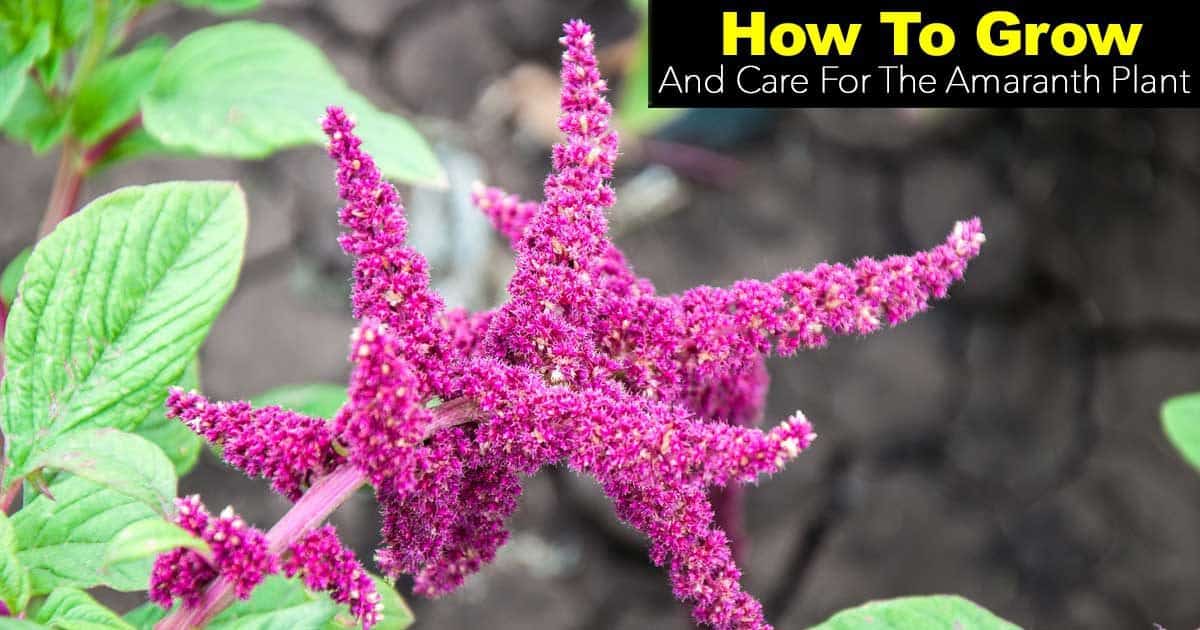The Amaranth, also known as amaranthus or sometimes called pigweed, is an easy to grow annual flowering plant.
If you desire dried flowers then look no further than the Amaranth plant.

Amaranth flowers actually retain their color even when they are dried.
The flowers make for perfect flower arrangements.
The Amaranth family includes herbs, flowers, and weeds.
The Inca and Aztec tribes in Central and South America used to harvest Amaranth seeds.
Today, Amaranth is grown as a grain crop in South America and Asia while you will find it in health food stores in the United States.
Some Amaranth Varieties or Species you can try include:
- Amaranthus hypochondriacus – Prince-of-Wales feather
- Amaranthus cruentus – Mexican grain amaranth, purple amaranth, red amaranth
- Amaranthus caudatus – pendant amaranth, tassel flower, quilete, known as ‘Love Lies Bleeding’
- Amaranthus retroflexus – common amaranth, red-root amaranth, red root pigweed
- Amaranthus tricolor – Joseph coat
- Amaranthus blitum – purple amaranth
- Gomphrena Plants (Amaranth relative)
Growing Amaranthus plant for food is interesting and fun and adds something different to a vegetable garden. Amaranths come in different colors including shades of lavender, pink, and white. Most of the common flower varieties grow 1 to 2 feet tall. Some of the bush varieties achieve a height of up to 4 to 6 feet. Their bright and long lasting flowers attract butterflies.
Amaranth Plant Care
Purple amaranth plants grow easily. The plants prefers warm climate, well-drained soil, and full sun. Although they are drought tolerant, be sure to water them during the dry season preferably one or two times a week. Add general purpose fertilizer one or two times a season.
Propagation Of Amaranth
Amaranth tree grows directly from seed. Sow Amaranth seeds directly into your flower or vegetable garden or you could start indoors and transplant later.
Amaranth is particularly susceptible to frost. These plants have a preference for warm weather conditions. If you plant it outdoors, sow the amaranth seeds once the soil has started warming up in spring.
An indoor start is preferable 6 to 8 weeks before the last frost in your location.
Sow the seeds early in the growing season and cover them lightly with soil. Space your seeds or seedlings 10 to 12 inches apart. They can handle a bit of crowding and look great in groups or clumps.
The germination of the seeds takes anywhere from 3 to 15 days.
Insect & Disease
The Amaranth plant is resistant to disease and insects. In warm, humid weather, powdery mildew problems may arise. If disease or insect problems occur, treat the plant early using chemical or organic fungicides and insect repellants.
Harvesting The Amaranthus Food Crop
Amaranth Leaf
Harvesting Red Amaranth leaves can begin just after three weeks from sowing. The tender leaves are usually tastier and creamier. Allowing the plants to grow results in very tall plants.
Seed Amaranth Grain
Red Amaranthus grains are the seeds that develop once the amaranth plant has flowered. Harvesting the seeds takes more time than the leaves.
Once the grain amaranths are ready for harvest, the amaranth flower stalks will start to dry out. If you rub the amaranth flowers gently and grains start to drop out you can cut the flowers and dry them. You can beat the flowers inside a bag to release the amaranth grains to produce amaranth flour.
Final Thoughts
This article provides a general overview of Amaranth plants and how to grow it. Now that you have all the information necessary to grow Amaranth successfully, it should not be hard to start growing Amaranth in your garden.
